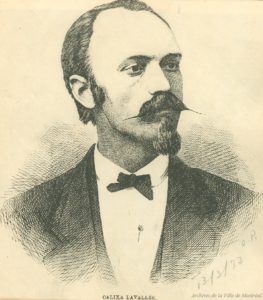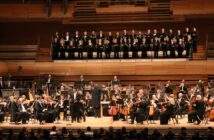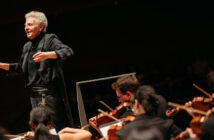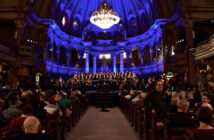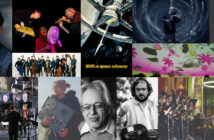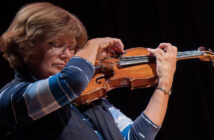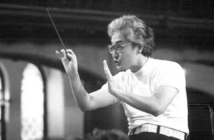
This page is also available in / Cette page est également disponible en:
![]() Francais (French)
Francais (French)
While growing up in the 1970s I assumed that O Canada was our nation’s official anthem. Many others were similarly mistaken. Song of a Nation: The Untold Story of Canada’s National Anthem, by Robert Harris, tells the true story. It is a wonderfully written biography, history and tale that will resonate and tug at one’s heartstrings while revealing fascinating details of Canadian history. Canadians and lovers of music will appreciate it deeply.
The biography is of a man who “left home at twelve, worked as a blackface minstrel travelling throughout the United States, fought in the American Civil War, was wounded at the battle of Antietam, produced the first opera in Quebec, wrote two of his own, became a leading figure in American music, journeyed to Paris to study for two years, tried and failed to create a Quebec national conservatory, and died in exile in the United States,” Harris states. “And wrote our national anthem.” That man was Calixa Lavallée, the son of one Augustin Lavallée, who helped Joseph Casavant construct his pipe organs. Baptized Calixte, Calixa and his renowned composition O Canada are the subject of this great read by Harris, who is known for his work as a broadcaster and journalist.
Hitherto, few have known about the world of Lavallée and the irony of how an anthem meant for French Canada became the anthem for a nation, one that is the home not only to Indigenous people and descendants of the colonial founders, but also to those who come to Canada year after year, looking for a safe place to raise their children.
Harris weaves a tale in just over 200 pages, an account that would make history courses in Canada’s secondary educational system a great deal more interesting. He situates the life of the young Lavallée in the context of the historical events of the time, be they the Patriots’ War of 1837, the American Civil War, or the issues surrounding Confederation.
Harris lends humanity to a man and an anthem about which little had been written. He uncovers interesting musical and historical facts about Lavallée, who had a protean career. To begin, Calixa was the eldest of a family of 13 children, most of whom went on to make music a part of their lives. Harris shows how the story quickly becomes muddied by Calixa himself. Upon Lavallée’s return from the United States after the Civil War, he often portrayed his life there with a purposeful obscurity to others. He never mentioned his activities in blackface as part of the travelling New Orleans Minstrels (who were in fact based in Providence, Rhode Island) and was quite prepared to make up stories about his past.
Years in Paris
We learn from Harris that Calixa the boy left home at the age of 12 under the patronage of Léon Derome, a butcher who was also “a supporter and connoisseur of the arts, a patron and a scout, a man immensely devoted to musical talent wherever he could find and support it.” Years later it would be the same Derome who supported Lavallée’s two years of serious study in Paris. From his arrival in Paris in the autumn of 1873 until he departed early in the summer of 1875, Lavallée had a great opportunity to become a serious musician. “He let his minstrel past sink deep into the Seine — he would never dredge it up again.”
While in Paris, Lavallée studied piano under Antoine-François Marmontel, “the go-to guy for serious students of the instrument” who had taught Bizet in the 1850s and included among his younger students Vincent d’Indy, Isaac Albéniz and Claude Debussy.
It was under the guidance of Marmontel that Lavallée was introduced to the music of Frédéric Chopin and Robert Schumann. While honing his skills at the keyboard, Lavallée was also improving his craft in composition under the guidance of equally famous opera composers François Bazin and Adrien Louis Victor Boieldieu. Harris wonderfully creates an historical canvas into which Lavallée fits as a piece of a larger jigsaw puzzle. “Although less information exists about the nature of Lavallée’s studies with them [Bazin and Boieldieu],” Harris writes, “it can be no coincidence that he wrote two operas on his own within the next ten years, and mounted productions of two others in his home province.”
Ahead of his time
Lavallée’s experience in Paris had given him a point of view of the role of music and a philosophical approach that greatly differed from the cultural conservatism he faced in Quebec. Lavallée was no longer performing his traditional repertoire but the works of “Chopin, Schumann, Beethoven, Mendelssohn, and Weber that he had studied with Marmontel in Paris.” Joseph Marmette, a friend and critic, said of one Lavallée concert: “The music made me wonder if I was really in Canada. And not at a European salon. M. Lavallée played… in such a manner so as to prove that his talent has not been exaggerated and he is one of our national glories.”
Not everyone was ready for this new music, nor for the idea of having the Quebec government fund a national conservatory. Lavallée was clearly ahead of his time when it came to the philosophy of nurturing the arts via state-sponsored education. Not only were Quebec politicians closed-minded to his ideas, the all-powerful Roman Catholic Church in his home province was conservative and not friendly toward Lavallée, who was much more secular in his views. “The Church and artistic creativity were forever at odds,” writes Harris.
In 1877, the diocese of Montreal made a decision, for whatever reason, to ban mixed choirs in the city’s churches. Lavallée struggled to find ways not to draw the ire of the Church. This was a challenge. How could the Church object to the staging of the play Jeanne d’Arc, “with incidental music by Charles Gounod which had caused such a sensation when it had debuted during Lavallée’s stay in Paris”? Lavallée’s attempts to get the attention of influencers and decision makers fell on deaf ears.
Subsequent political twists of fate finally allowed Lavallée to plan for the first performance of O Canada on June 24, 1880 as part of a huge open-air mass on the Plains of Abraham. For reasons that have never been explained, that public presentation never took place. Later that same day at a banquet, however, an instrumental version was played for the officials and decision makers in attendance.
Lavallée had a number of enemies, particularly those who were opposed to the formal adoption of music education. Other egos were involved. Governor-General Lorne, for whom Lavallée had first performed O Canada, had his own designs. “He wanted Canada’s national anthem to be written by Sir Arthur Sullivan, then at the height of his fame along with his partner William S. Gilbert.” Lord Lorne had already persuaded Sullivan to write the Dominion Hymn while visiting Rideau Hall in March of 1880, nearly 140 years ago. Have you ever heard of the Dominion Hymn? “Not one Canadian in a million knows that Arthur Sullivan wrote a national anthem for Canada,” muses Harris.
Nor do many know about its origins as a French-Canadian patriotic song. “In 1980, on the centenary of its first performance, the late revered Peter Gzowski and I talked about the anthem on CBCs Morningside,” Harris writes in his introduction. “Peter, proud Canadian that he was, noted how ironic it was that O Canada was premiered on St. Jean Baptiste Day, the national holiday of Quebec, the single day of the year associated with Quebec nationalism.” Gzowski was right to underline the irony. Harris even reveals some of the political subterfuge which took place in order for the Saint-Jean Baptiste Society to accept O Canada.
 Lavallée’s legacy to music education
Lavallée’s legacy to music education
Harris’s Song of a Nation offers an overview of the productive life of a great man. Calixa Lavallée was not only the composer of O Canada; he also contributed to formal musical education in North America. The situation in Canada did not allow him to carry out the reforms that he was deeply devoted to. He moved to Boston just months after O Canada was premiered, never returning to Canada, although his body was eventually reinterred at Notre-Dame-des-Neiges Cemetery on Mount Royal in 1933 on Bastille Day, the national holiday of France, where he had studied.
However, before Lavallée died, a few weeks after his 48th birthday in 1891, he had set the wheels in motion regarding reforms to music education in North America. Even though many Americans were not even aware of O Canada, nonetheless “Calixa Lavallée became one of the most important figures in the history of American music,” according to Harris.
While he never succeeded in forming a national conservatory in Quebec, the inroads he made in the United States changed the face of American music. Two years after Lavallée relocated to Boston, he first attended a meeting of the Music Teachers National Association (MTNA). This meeting seemed to fit in with all of the aims Lavallée had in musical pedagogy since his return from Paris years earlier. Working within the MTNA, he was able to reform music education and thus the role of music in American life.
In this regard Harris tells a wonderful tale, notably of a concert at a 1884 meeting in Cleveland of the MTNA. Lavallée “was demonstrating that there were American composers of excellence whose work deserved the highest level of performance by seasoned professionals and more frequent presentation to domestic audiences.” Not only was Lavallée the composer of Canada’s national anthem and much more, he contributed to Americans taking pride in their own musical talents.
A piece of magic
As I thought that O Canada had long been our national anthem, Harris set me straight in understanding that it was only with the Quebec referendum of May 20, 1980 — and as a direct response to Gilles Vigneault’s Gens du pays — that the federal government finally adopted O Canada as our national anthem. It was the result of a very interesting political process as Harris describes it. “On June 27, 1980, just four days before Canada Day, a remarkable scene played out on Parliament Hill. A bill that had been debated for years, that had occasioned the fiercest opposition, passed second and third readings in both the House and the Senate and received royal assent — all in a single day.”
Harris explains the musicality, simplicity and power of O Canada in its original score. My musical education is limited to the appreciation of music I acquired from Iwan Edwards in high school, as well as living and working with composers in Ukraine and having lived beyond our borders. Hearing what Calixa Lavallée composed as an anthem for French Canada, standing on podiums as an athlete, or in the courtyard of Canada’s Embassy in Ukraine on Canada Day, has always given me great pride as a Canadian.
We must try to remember that our anthem was first composed as a Chant National for French Canada, and that a century passed before it was officially Canada’s. While Lavallée had composed the music, it was Adolphe-Basile Routhier, a judge, who penned the French words quite in the spirit of Lavallée’s musical construct, and it wasn’t until 1908 that another judge and poet, Robert Stanley Weir, took the spirit of the music and wrote the first English-language lyrics. They “were amended by him three times — in 1909, 1913, and in 1916 — and soon became the generally accepted English version of the anthem,” Harris writes.
As lovers of music, readers of La Scena Musicale will appreciate Harris’s approach to the music itself. I particularly enjoyed his deconstruction of O Canada about two thirds of the way through his work: “…The structure of the song is significant because it provides the emotional arc on which the music is built, and which our musical subconscious follows like a story in sound. More than anything else, that structure creates the potency of the anthem.”
Harris explains just how Lavallée works his magic in the unfolding of O Canada and how we never think about the three simple sections of the anthem “because usually a brass band is blaring it out inches from our eardrums.” The sections invoke something very visceral when they work together.
The first section, “O Canada! Our home and native land!” is a church-like invocation of the country itself. Then comes a crescendo leading to what is just over the hill. Lavallée employs “all sorts of rhythmic and melodic markers” throughout the piece. The work transitions to the second section, from a tone of supplication, “to a beat of a march and the increasing tension and conflict.” Further on, Harris explains: “The key to the music lies in the left hand of the piano accompaniment that Lavallée wrote for this section. It’s a series of repeated octaves on a single note — a low D — that pound out insistently and incessantly, over and over again, never varying — boom, boom, boom, boom — like a fevered dream… he wanted to plunge us from the sweet, almost divine nature of the first part into the confused and inspiring anxiety of the second.” Lavallée uses another rhythmic tool to “ramp up the emotions” in the third section: “The powerful opening rhythm keeps repeating, with no calming influences: first on ‘God keep our land,’ then on ‘glorious and free’ and finally on the triumphant ‘O Canada’ which is repeated as we reach the climax of the piece.”
As a librarian/information specialist, I would strongly recommend this book for any music or history library collection. Harris has researched and presented to us “a gem” of our musical history, within the context of the greater historical representation of the formation of a country, which has come to be known as Canada.
Song of a Nation: The Untold Story of Canada’s National Anthem, by Robert Harris. Toronto: McClelland & Stewart. ISBN: 9780771050923.
This page is also available in / Cette page est également disponible en:
![]() Francais (French)
Francais (French)



